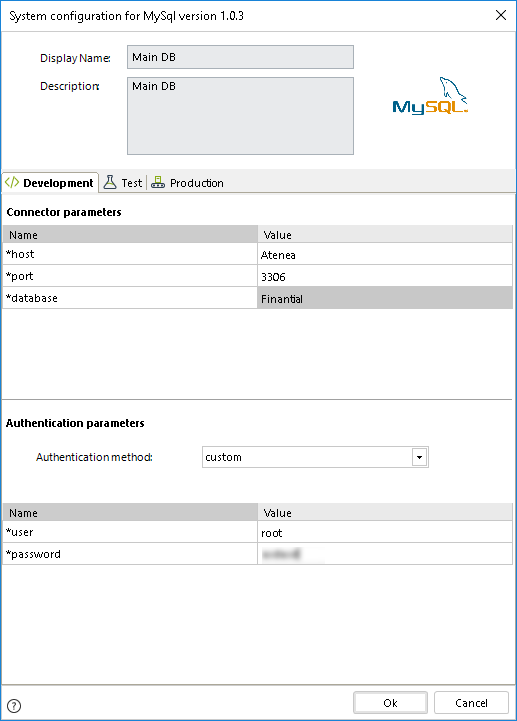Overview
The MySQL connector for Bizagi is available for download at Bizagi Connectors Xchange.
Through this connector, you will be able to connect your Bizagi processes to a MySQL database and run a statement (insert or update).
For more information about this connector's capabilities, visit Bizagi Connectors Xchange.
Before you start
In order to test and use this connector, you will need:
1.Bizagi Studio previously installed.
2.This connector previously installed, via the Connectors Xchange as described at https://help.bizagi.com/platform/en/index.html?Connectors_Xchange.htm, or through a manual installation as described at https://help.bizagi.com/platform/en/index.html?connectors_setup.htm
3.An installed MySQL database service.
Configuring the connector
In order to configure the connector (i.e its authentication parameters), follow the steps presented at the Configuration chapter in https://help.bizagi.com/platform/en/index.html?connectors_setup.htm
For this configuration, consider the following connection parameters:
•Host: The server name where the database service runs.
•Port: The port number under which the database service attends connections (by default, MySQL uses 3306).
•Database: The name of the database to connect to.
For this configuration, consider the following authentication parameters:
•Authentication method: Custom.
•user: The username which has access to that database. Notice you should also make sure that such user has write or read access, according to the type of query you want to run (a query basically doing an insert or update).
•password: The password for the user.

Using the connector
This connector features connectivity to a MySQL database instance.
To learn overall how/where to configure the use of a connector, refer to https://help.bizagi.com/platform/en/index.html?Connectors_Studio.htm.
When using the connector, make sure you consider the following details for the available method.
Run query
This method allows you to run a query directly at MySQL database (a query basically doing an insert or update).

To configure its inputs, consider:
•Query: The SQL statement to be executed by MySQL (e.g UPDATE, INSERT INTO...)

To configure its outputs when getting started and testing, you may map Message (e.g, notifying about a successful INSERT clause operation).

For more information about this method's use, refer to the Node.js MySQL package documentation, at https://www.npmjs.com/package/mysql.
Last Updated 10/27/2022 11:35:28 AM